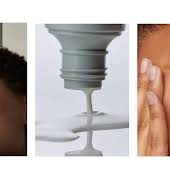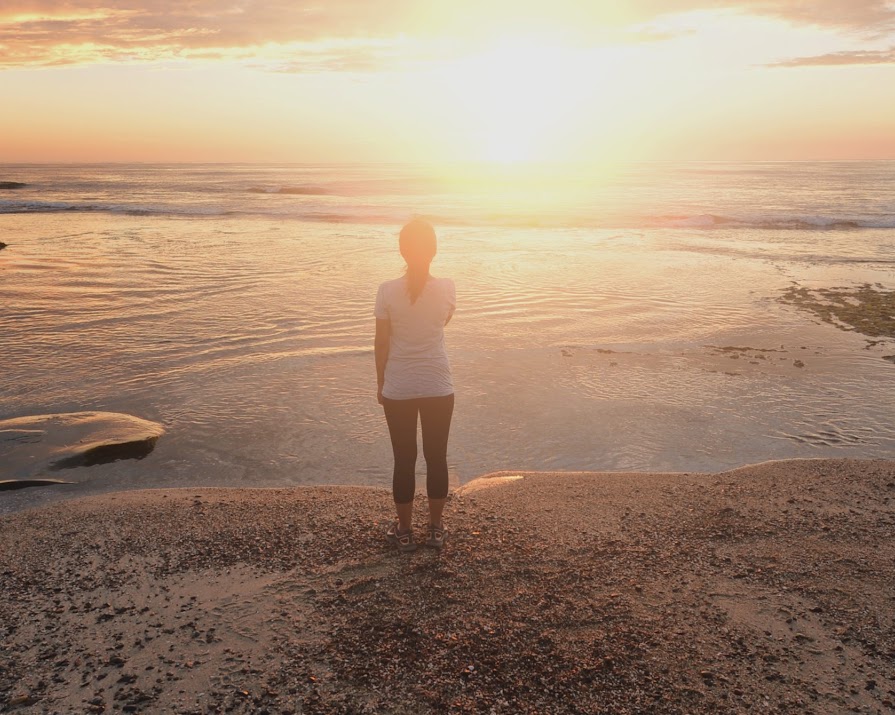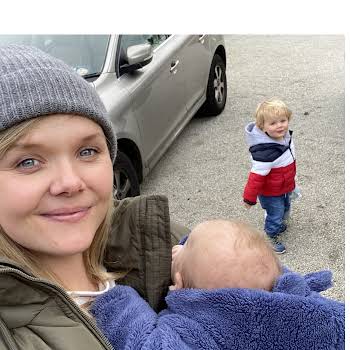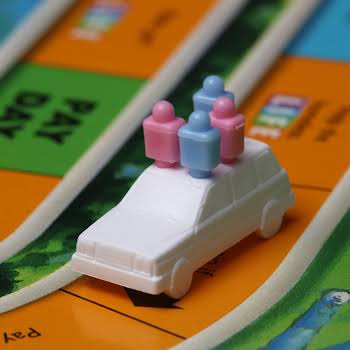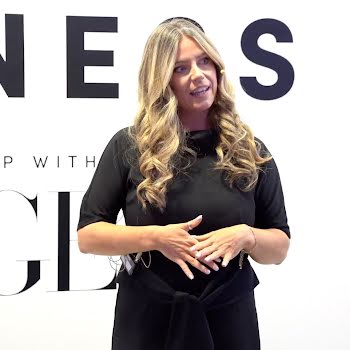
By IMAGE
10th Sep 2019
10th Sep 2019
teenage suicide attempts
This World Suicide Prevention Day, we’re looking to an eye-opening piece from the IMAGE archive. In May 2019, Charlotte Gunne – the mother of a teenager who tried to take her own life – looked at the rise in teenage suicide; speaking with some of the people working tirelessly to support and protect society’s most vulnerable.
“Oh my god, I want to rope myself,” she says. My heart stops and my mouth goes dry. She doesn’t mean it, it’s a throwaway remark, a furious reaction to a situation that displeases her, not meant to shock, yet the panic courses through me.
She appears unaware of how much I worry as she tosses this phrase around with indifference. She doesn’t mean it, but she overdosed once before, so the paralysing fear remains.
Suicide attempts among our teens have become socially accepted within their peer group. It has become so commonplace that they have become somewhat desensitised to the act. But while making this cry for help, how many of our teens succeed without ever meaning to?
I had always considered her fearless, born with wings even. She was the child who dangled from the tallest branch of the tree to rescue a stranded cat or indeed snag the biggest apple. She was constantly singing, and our family soundtrack was her lilting voice bellowing out songs from whatever Disney movie she was obsessed with at the time.
Her daily outfit was more often than not a blend of mismatched fancy dress items, and her hair always needed to be brushed, but she had better things to do. There was always flowers to be picked or a bird to be rescued. She was the star of the show, the girl who never stopped talking.
‘She didn’t appear unhappy’
She was 16 when it happened. Her father had left when she was nine and she hadn’t seen him since. It had deeply affected her, but I thought she was coping. Yes, there were good days and bad days, but we were a close-knit family and this was a bolt from the blue.
She didn’t appear unhappy, just a tetchy teen who would, I assumed, grow out of her mood swings. She was perfectly normal.
There were plenty of friends she spent time with, and of course there was always some drama amongst them. Arguments and bitchiness were commonplace, but it appeared to me to be business as usual in the life of a 16-year-old. We always talked about things and so I assumed I would know if something was amiss.
I was wrong.
On the day everything changed, I was wandering aimlessly around the supermarket, deciding what to pick up for dinner, when I happened to glance at my phone. There were seven missed calls from her and numerous frantic text messages begging for help.
My mind was racing as I dialled her number, my hands shaking furiously. Had she been attacked? Was someone hurting her? It seemed to take forever for the call to connect. When she finally answered, I found it hard to comprehend her words through the tears and the hysteria, but eventually I understood the situation.
‘I should have been there’
My beautiful, fearless daughter had tried to take her own life. She had trawled our home looking for tablets and taken everything she could find, then rang me in a blind panic when the reality of what she had done set in. I will be forever thankful for that. I was 20 minutes away from home, and the hardest thing I have ever done was hang up on her in order to ring an ambulance.
The emergency services advised me that an ambulance would arrive as soon as possible and instructed me to call her back and keep her on the phone while I drove home. It was the longest drive of my life. Even recalling that drive today brings me to tears, remembering the feeling of utter helplessness and despair that I wasn’t there to mind her.
Her fear was palpable and as her mother, I should have been there to make everything better.
Recovery
Her hospital stay was brief, and luckily she recovered without lasting physical damage, which is often not the case. The only tablets we had in the house were mild painkillers and allergy medication, but even an overdose of paracetamol can cause long-term damage to the liver, or even death in some circumstances.
The experience left us both reeling, and talking about it with her left me with more questions than answers.
She didn’t know why she had done it. She was just one in an increasing number of children and teens thinking about suicide. Not long afterwards, I heard of two other local boys who had done the same thing. One survived, one was not so lucky. I have no way of knowing how that family survived, or even if they did manage to pull through.
I consider us to be among the lucky ones – I still have my daughter. It begs the question, what is going on with our teens?
The nature of teens
The famous quote “suicide is a permanent solution for a temporary problem” comes to mind, but as is well known, teens don’t consider the long-term, only the here and now.
They are, by their nature, reactionary, and this combined with the drama of the teenage years is a very dangerous cocktail.
In the past five years, there has been a 163% increase in teens presenting to Pieta House due to suicide attempts or self-harm, and Ireland has the highest rate of death by suicide among teenage girls in Europe and the second-highest among teenage boys.
We all know that the brain of a teenager is not fully formed and does not have the cognitive development of an adult, but that has always been the case, so what has changed? According to Marguerite Kiely, director with Athena Training, a Dublin-based organisation that delivers bespoke mental health and wellbeing workshops throughout the country, social media has a lot to answer for.
The popular Netflix TV show 13 Reasons Why caused some outrage when it was released, with mental health professionals slamming it for promoting suicide ideation among its target audience – teenagers. Add to that the fact that videos showing how to tie an effective noose can easily be found online, and that laptop in your teenager’s bedroom becomes a very scary vortex indeed.
Fear or friend?
According to Marguerite, who served as clinical director with Pieta House for 13 years, teens consider suicide either a fear or a friend. “Teens often consider suicide a friend, in the context that if anything else goes wrong in their lives, suicide will be there for them, no matter what.
They don’t have the cognitive ability to realise that they may not be coming back. Sometimes, a teen can make numerous attempts, becoming comfortable with the act and feel secure in the belief that they know how far to go without actually succeeding.”
But mistakes happen, and children die. Suicide ideation is a disease, and like any disease it can spread with surprising ease if people are not properly protected, and teenagers are the most vulnerable in our society.
When a child succeeds in taking their own life, the surrounding community is devastated, but to some teenagers watching from the sidelines, tunnel vision ensues and all they absorb is the drama and glorification such a tragedy inspires, especially at funerals. We all know that teenagers thrive on drama, and the death of a child is drama at its most dramatic.
Light at the end of the tunnel
However, as frightening as it might be, there is light at the end of the tunnel. Never before has there been more help and support for those affected by this issue.
Marguerite and her colleagues, Cindy O’Connor and Noleen Devlin, set up Athena Training in January this year to aid mental health wellbeing and work on the prevention of suicide while also supporting those in need during the aftermath.
Pieta House has also introduced a School Resilience Academy, a six-week school-based programme that builds skills in resilience at secondary schools throughout the country. Through this programme, teenagers are equipped with the knowledge, skills and tools they will need to cope with life challenges in a healthy and constructive manner.
We know the teenage years can be a difficult time, but teaching our children the skills to cope in the face of adversity is the key to keeping our children safe.
Universities too are very supportive of student mental health issues, as starting university can be a difficult and somewhat lonely time for many young adults. According to the Union of Students in Ireland (USI), approximately 8% of students attending university in Ireland are availing of counselling in some form or another.
Becoming an adult vs maturity
Turning 18 may be a milestone birthday, but although it might mark the official beginning of adulthood, we all know that for some, adult maturity is still a long way off.
They still need all the help and support they can get.
Another invaluable resource is Soar, a collective movement that celebrates the greatness to be found within all young people. Soar aims to provide early intervention and preventative wellness workshops for young people aged 12 to 18 years. It runs weekly workshops and has so far helped more than 27,000 teens since 2012.
Professional help is necessary
The stigma attached to mental health is a war being waged with some success, but the most vulnerable in our society need the understanding and support that recognises they cannot, and should not, cope with these feelings alone.
As parents, our role is to protect our children, but sometimes doing that means admitting that we are not equipped to deal with everything they are enduring.
Professional help and support is no longer a luxury. If we are to protect our children and ensure their wellbeing, it is a necessity.
As I say, I’m one of the lucky ones. I wish I could say that for the other families within our community who have lost a child to suicide, but sadly that’s not the case.
I don’t know how they feel… I hope I never do.
If you, or if someone you know, has been affected by any issues raised, help and advice can be found at:
Samaritans: freephone 116123 or text 087 260 9090
Pieta House: freephone 1800 247 247 or text HELP to 51444
Aware: freephone 1800 804 848
Photo: Frank McKenna, Unsplash
This article first appeared in the May issue of IMAGE Magazine. Our September issue is on shelves now.






